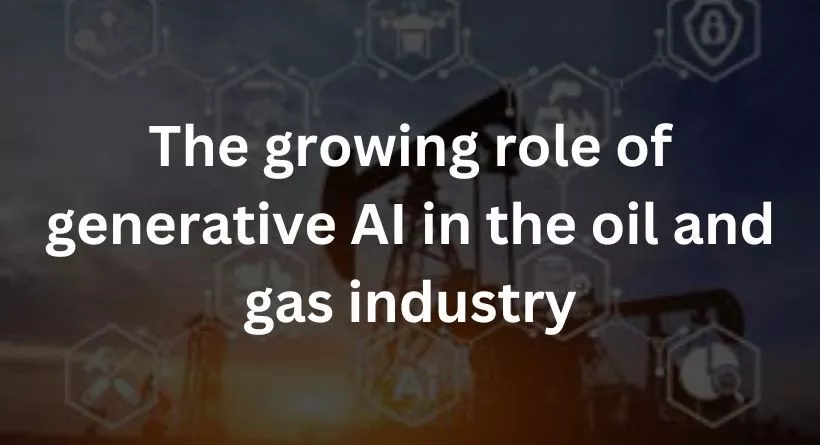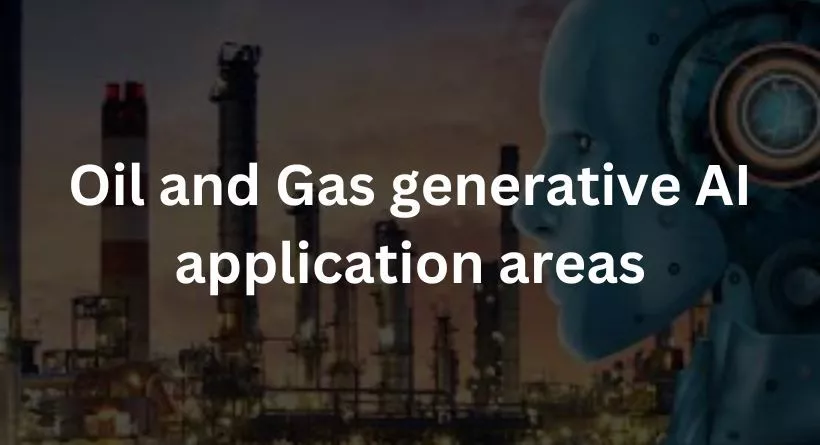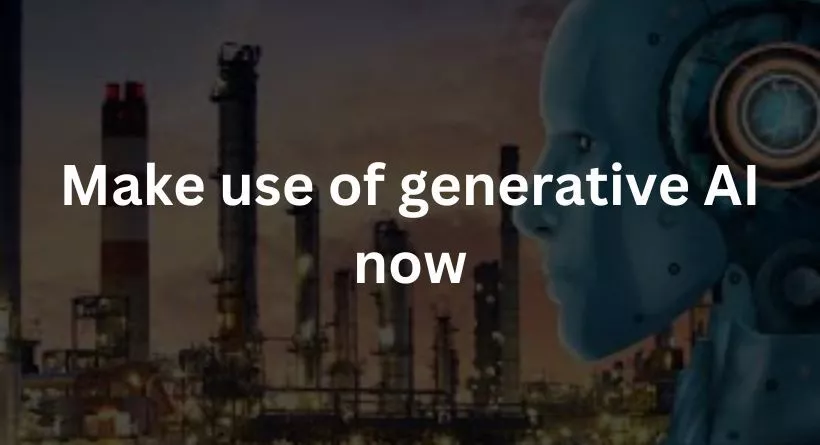
Global industry continues to face formidable obstacles in its efforts to cut down on energy use. The worldwide pandemic caused the global energy consumption to drop by 4.5%, but it is presently rising by 5%. It is projected that the world’s energy consumption will increase by 1% to 2% year in the future.
Reducing energy consumption is only one aspect of the problem; other factors that contribute to closing the global energy offer gap include the availability of optimum energy solutions and varied energy sources.
The US Energy Information Administration (EIA) projects that by 2050, electricity generation will have increased by roughly 20 trillion kWh to over 45 trillion kWh. Important sectors like oil and gas are under tremendous pressure to improve upstream and midstream business models while decarbonizing their operations from regulators, shareholders, consumers, and even their own workforce. Sustainable innovation is being driven by the energy shift in all oil and gas operations streams. Most energy businesses are adding environmental management as a fifth essential pillar to their four core business pillars of transportation, production, distribution, and exploration. In particular, generative AI is a novel technology that has the potential to completely transform the industry by increasing productivity and profitability while also fulfilling these more general sustainability objectives.
Using preexisting data, generative AI generates new data. Computers may now develop fresh text, video, and/or picture material that is comparable to what a person would produce thanks to sophisticated machine learning. The neural networks and probabilistic algorithms that underpin generative AI models employ vast quantities of data to rapidly learn and produce meaningful statistical data.
You won’t believe what generative AI can accomplish for commercial and industrial sectors if you’re impressed with what ChatGPT can accomplish for your everyday work.
You may also like rading: 6 Remarkable Applications of AI in the Oil & Gas Industry
7 Oil and Gas generative AI application areas

The operational effectiveness, overall productivity, and profitability of the oil and gas sector may all be enhanced by generative AI in the use cases listed below.
Predictive maintenance
In order to create predictive maintenance models, generative AI may examine sensor data and past maintenance records related to pumps, compressors, turbines, and other infrastructure equipment. Then, these algorithms predict probable equipment malfunctions before they happen. These early alerts maximize the use of professional personnel, limit downtime, and lower maintenance costs.
Reservoir modeling and simulation
Generative artificial intelligence (AI) offers insights into reservoir porosity, permeability, and fluid behavior features by producing precise reservoir models and simulations and by evaluating geological and geophysical data. This aids in the optimization of drilling tactics, hydrocarbon reserve estimation, reservoir performance simulation under various production scenarios, and production efficiency maximization for engineers and operators.
Environmental monitoring
Generative artificial intelligence (AI) helps oil and gas businesses with environmental impact assessments by evaluating a variety of data sources, such as satellite photography, climatic data, and regulatory standards. Predictive models assess the possible effects of activities on ecosystems, water resources, and air quality based on that data. Subsequently, this data assists in reducing environmental hazards and guaranteeing adherence to regulations.
Scenario planning and decision support
Additionally, oil and gas businesses may assess how shifting geopolitical conditions, oil prices, or operational choices will affect their financial results, output levels, and risk exposure by using generative AI models. Stakeholders may create stronger plans and make better decisions with the use of this knowledge.
Data analysis
Natural language processing methods are used by generative AI models to glean insightful information from unstructured data sources such as sensor readings, production reports, and drilling logs. Businesses may increase optimization and performance by making more effective data-driven judgments while carrying out operations like sentiment analysis, trend identification, and anomaly detection.
Exploration
Generative AI algorithms are able to swiftly detect patterns and trends that point to the existence of oil and gas resources by evaluating enormous volumes of geological and geophysical data. These insights help corporations decide where to drill and how much to spend on exploration with more knowledge. The models show the possible benefits and hazards connected to various drilling sites.
Generation of PLC Codes
Programmable Logic Controllers (PLCs) are used by oil and gas businesses in a variety of tasks, including pipeline management, production process control, monitoring, and refining. Generative AI may be used by automation engineers and software developers to accelerate the creation of PLC code. Engineering teams may decrease the likelihood of mistakes and shorten development times by using natural language inputs to generate PLC code.
Make use of generative AI now.

These are just a few instances of how oil and gas industries may reduce carbon emissions and increase operational efficiencies via the use of generative AI. The key to reducing costs and emissions is to use generative AI capabilities, but deploying the model also requires powering and protecting the IT infrastructure, which can be difficult in hostile situations. Oil and gas stakeholders may increase their generative AI capabilities by deploying edge computing systems shielded by the new NEMA 4 outdoor enclosures for hostile environments by collaborating with infrastructure and energy management firms like Schneider Electric.
Conclusion
In conclusion, the article recaps the significant strides generative AI is making in reshaping the oil and gas industry. It stresses the importance of embracing this technology for both economic and environmental sustainability.
FAQs
What is generative AI?
A brief overview of generative AI and its capabilities.
How does generative AI impact oil and gas operations?
Exploring the specific applications and benefits in the industry.
What challenges are faced in deploying generative AI in hostile environments?
Addressing the difficulties in implementing generative AI in challenging conditions.
Why is environmental management becoming a crucial aspect of the oil and gas industry?
Explaining the industry’s shift towards integrating environmental considerations.
How can oil and gas stakeholders collaborate with technology firms for AI implementation?
Highlighting the importance of collaboration for successful deployment.





